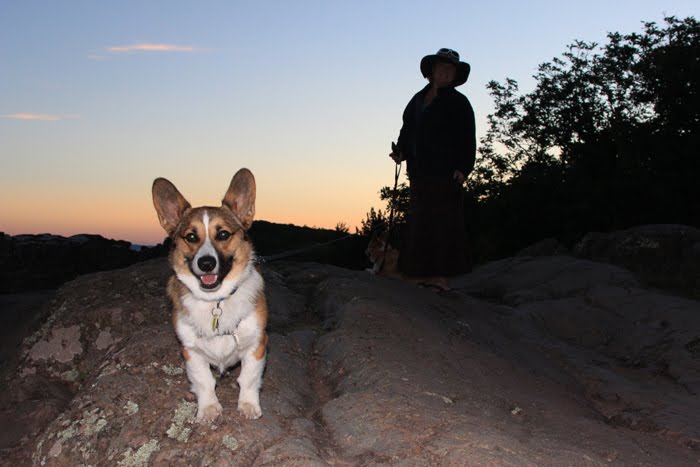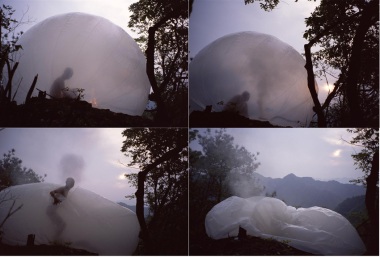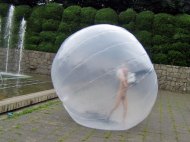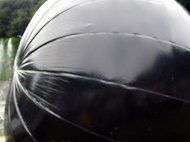
Wednesday, August 24, 2011
Friday, May 20, 2011
7 principles of comedy/design/creating anything via Design Observer

Several people called us about HBO’s hour-long special “Talking Funny” in which four great comedians — Ricky Gervais, Jerry Seinfeld, Chris Rock and Louis C.K. — talk shop for an hour. Our friends were all struck by how the “inside” of comedy echoes the process of making just about anything truly creative. Before we got to watch it, we found Michael Beirut‘s insightful post on Design Observer: Seven Things Designers Can Learn from Stand Up Comics. We’d change “Designer” to “Any Creative Person Who Is Trying to Make Something Great”; these 7 principles apply to way beyond comedy and design. We’ve printed the whole thing here, highlighted the essentials AND left it to you to fill in blanks. But it’s WORTH reading every word, especially Louis C.K.’s riff on the F word and Corvette’s in #4. Illuminating and really funny. (If you don’t get HBO, you can watch Talking Funny in 4 parts on YouTube. We also recommend Louis C.K.s beautiful ‘everything is so amazing, but nobody is happy’)
1. It’s all about the basics.
“I love jokes so much,” says Jerry Seinfeld towards the beginning of the show. “I love them so much.” He loves them because they’re the indestructible building blocks of comedy. The others agree. “So many of these young guys think it’s all attitude,” says Chris Rock. “But you have to have jokes under your weird persona, under your crazy glasses, under your crazy voice.” Design _____has basic building blocks too: scale, proportion, hierarchy, contrast. Get those right first. Or, as Seinfeld concludes: “You can put in all kinds of furniture, but you have to have steel in the walls.”
2. Once you’ve mastered the basics, make your work your own.
“Do you think you have to have a thing?” asks Ricky Gervais.”Well, you’ve gotta figure something out,” responds Seinfeld. Between all the “things” and “somethings,” we know exactly what they’re talking about. Every successful comedian is different. The best have an immediately identifiable attitude, whether it’s Henny Youngman, Demetri Martin, or the four participants in “Talking Funny.” The best designers are no different. Think of how many ways there are to design something like, say, a Vladimir Nabokov book cover. A good designer _____is a problem solver. A great designer _____can figure out a way to solve a problem that’s completely unique. At one point, Seinfeld tells a Louis C.K. joke his way, and asks, “Is that how it goes?” Louis CK replies, “Well, that’s a completely Seinfelded version. You made it…nice.” It’s one of my favorite parts of the show.
3. Respect your audience.
Chris Rock says: “A lot of comedians have great jokes, and they’re like, ‘Why is this not working?’ It’s not working because the audience doesn’t understand the premise. If I set this premise up right, this joke will always work.” The comics talk about ensuring the audience — so demanding, so easily distracted — is with them for every joke during the act. This doesn’t mean talking down or pandering. Rather, it’s good old-fashioned respect. I sometimes tell students that every design _____needs a welcome mat and a doorknob. The first helps a person realize, “Hey, this is for me.” The second gives them a way into the design _____. Good design _____, like good comedy, is about surprise. But surprise can’t happen in a vacuum. It needs a context that establishes familiarity. If you respect your audience, you provide that context.
4. Know your tools.
The tools of a stand up comic are words. Some [tools] are good for every job. Some are more powerful and should be used sparingly. All of them are potentially crutches. Louis C.K. says that Jerry Seinfeld once told him, “The F word is like a Corvette.” “And I thought,” says Louis C.K., “that means that it’s fast and it’s cool and it’s got power and thrust to it. But then I thought, wait a minute, this guy grew up on Long Island and collected Porsches. So to him, a Corvette is a piece of shit, with a Chevy engine, just a flashy bullshit car.” Your own favorite tool may be a typeface, or a Photoshop effect, or a certain color combination. Seinfeld says he stopped using the F word when he realized it had become a crutch. Of course, one man’s crutch is another man’s secret weapon. Or, as Louis C.K. observes, “Where I grew up, a Corvette is an awesome car.”
5. Honor your craft.
One striking running theme of “Talking Funny” is that each of the comics works extremely hard, creating challenges where they might just as easily coast. Chris Rock reinvents his entire show every year. Louis C.K. regularly takes his closing bit — the strongest part of his show — moves it to the beginning, and forces himself to create a new show designed to top the old climax. Ricky Gervais says, “Oh, it’s not just being funny. It’s being proud of your stuff and doing things that other people couldn’t do.” Louis C.K. adds that, for him, “Easy laughs, cheap laughs, they don’t exist.” Chris Rock: “How many unfunny comedians have ever sustained a career not being funny?” Mastery of craft is tied to perpetual self-improvement. And, just as in design _____, mere technique is never enough. Louis C.K. is nervous when he feels he’s relying on technical skill. “This bit is working because I know how to do stand up, not because it’s something that’s important to me.” Hone your skills, but make certain they serve ends that are important to you.
6. Don’t be afraid of failure.
Good comedians experiment constantly. Every time they test a new joke, they risk bombing. That’s why they’ll try out new material in smaller venues, polishing pieces in front of live audiences: they need to hear what’s working and what’s not working. Seinfeld admits that when he was starting out, “I was hitting 500. I would have a good show and a bad show, a good show and a bad show.” His very first show was bad. “But success wasn’t my objective.” He was desperate to simply be on stage, and was willing to risk failure every other night to get there. Designers take risks for the same reasons. Trying something new means not being sure of the outcome. But it’s the only way that anyone working in a creative field can hope to make progress. Ambition is a strong enough antidote to fear. Louis C.K. remembers how he idolized good comics: “I wanted to be one of them, and I didn’t care if I sucked at it.”
7. Finally, never forget you have a special gift.
Ricky Gervais, in a revealing moment, asks, “Don’t you ever think, when we make people have this feeling of laughter, and they pay us money: what if they discover they can do it themselves?” The other comics are rather stunned at this. Seinfeld shouts, “But they can do it themselves!” Gervais, almost glumly asks, “Then why are they paying us?” Louis C.K. answers, “We’re a high octane version of it. We’re pros. They can play touch football, too.” And Seinfeld adds: “But that doesn’t hurt the NFL.” We live at a time when the tools of design are more available than ever before. What client doesn’t have a nephew who knows InDesign, or, better still, a spouse with a newly discovered enthusiasm for Powerpoint? Graphic design: anyone can do it, right? Well, yes. But the professionals still understand what it means to do something well. And that confidence makes its own statement.
Near the end of the show, Chris Rock talks about what a pleasure it is to watch anyone do anything really well, even a great truck driver. “I just saw this guy park an 18-wheeler into this narrow space,” he says. “And I said I guarantee you there’s heart surgery that’s not as hard as what this guy just did.” Louis agreed. “I watched a guy pull into a loading dock, and I stopped and said, ‘That was amazing.’ And he was like, ‘Yeah, I know, I know.’” If you’re a designer, it’s easy to forget that what you do is, in so many ways, amazing. Appreciate that gift in yourself. Appreciate the gifts of others. And look for lessons wherever you can find them.
via Design Observer
share this
Sunday, May 15, 2011
Artist: Anish Kapoor





Anish Kapoor unleashes whale-like monster on Paris by Vicky Buffery
PARIS | Tue May 10, 2011 8:41pm IST PARIS (Reuters Life!) - Entering Anish Kapoor's latest sculpture through a dark, windowless revolving door, visitors experience a momentary blackout before emerging into a womb-like cavity -- warm, oppressive and bathed in red light. This is "Leviathan" at Paris's Grand Palais, the Mumbai-born British sculptor's first work in France for 30 years, to be unveiled to the public on Wednesday, and an experience one can only imagine is like being swallowed by a whale.
Famed for his critically acclaimed Cloud Gate in Chicago and Sky Mirror in New York, Kapoor is the fourth artist to be invited by the Grand Palais to create the annual Monumenta exhibition in its vast, glass-roofed central nave.
Previous exhibitors at the historic Art Nouveau building, erected for the 1900 World Fair, were Christian Boltanski in 2010, Richard Serra in 2008 and Anselm Kiefer in 2007.
"It's fabulous. It's a challenging space and that's the main motivation for me," Kapoor told Reuters on the sidelines of a preview of the exhibition.
In an interview with British media earlier on Tuesday, Kapoor dedicated his installation to artist Ai Weiwei, calling Ai's arrest and detention by Chinese authorities "barbaric" and urging museums and galleries to close for a day in protest.
Ai, an outspoken critic of China's human rights record, has not been heard of since he was detained at Beijing airport on April 3.
"This takes us back to a Soviet-style time when the voice of artists was seen as dangerous," Kapoor told the BBC.
ARCHAIC FORCE
Inside Leviathan, the viewer is invited to take part in a physical and mental experience, a sensory immersion in a translucent membrane designed to interact with the architecture of the building in which it is housed.
The red glow is created by daylight flooding from the nave's glass roof and through the sculpture's tent-like walls, and its intensity, as well as the temperature in the cavity, vary as clouds pass over the sun.
From the outside, however, Leviathan offers a completely different experience, a feeling of awe at the overwhelming scale of the bulbous, rubber-like installation, which stands 35 metres (yards) high and fills the entire 35,000 sq metres (376,700 sq ft) of the nave.
"For me, this huge archaic force is linked to darkness. It is a monster burdened with its corpse, which stands guard over some forgotten regions of our conscience," Kapoor explains.
Perhaps reminiscent of the intimate, womb-like interior, however, there is still something faintly erotic about the outside of the sculpture and it is hard to shake off the feeling one is looking at a giant, three-balled massage device, rather than a mythical sea-monster.
But as Kapoor says in a blurb on his work:
"I think there is no such thing as an innocent viewer. All viewing, all looking comes with complications, comes with previous histories, a more or less real past."
(Reporting by Vicky Buffery; editing by Paul Casciato)
Leviathan is 35 metres high and comprised of tautly-stretched PVC over a giant metal frame and is the highlight of the exhibition which opens tomorrow and runs until June 23.People can walk around it and inside it.
Kapoor said: 'My ambition is to create a space within a space, responding to the great height and light of the nave of the Grand Palais.
'People will be invited to enter the artwork to immerse themselves in its colour and it will be I hope a contemplative, poetic experience.'
Sir Ken Robinson Lecture
MATRIX:MIDLAND Festival 2011 Events

SIR KEN ROBINSON: The Element:
How Finding Your Passion Changes Everything
Sir Ken Robinson's 2009 breakthrough book about talent, passion, and achievement provides a real platform for our futures. It is essential information for anyone with children, unfulfilled dreams or a life still to live. The video of his famous 2006 TED Conference talk has been seen by an estimated 200 million people in over 150 countries. It is currently listed on the TED website as the most favored video of all time. A public reception in the Brick Lobby will immediately follow the presentation.
"Ken Robinson is probably the most gifted communicator on earth when it comes to explaining the value of creativity." ~Governor Mike Huckabee
TICKETS:
Adults $30 | Students $18
Saturday, May 14, 2011
Artist: Zhu Ming
MOUNTAIN ROCK SERIES
CURATED BY WU HUNG
June 2 - July 9, 2011
opening reception: June 2 (5-8pm)

Image:10 o'clock July 27, 2008 No. A, In Xiaogling Liangshanzhou Sichuan, China, Photograph
Chicago, Illinois : Mountain Rock Series by Zhu Ming curated by Wu Hung.
The exhibition Mountain Rock Series is a titillating combination of photos, videos and paintings by Beijing artist Zhu Ming. His signature style balloon performances are juxtaposed alongside his recent paintings which examine the dual roles of illusion and reality and their interchangeable nature. Foremost contemporary art scholar Wu Hung curated the exhibition. The show opens Thursday June 2nd from 5-8 pm. The artist and curator will be present.
Zhu Ming moved to Beijing as a teenager in 1992 "for art." He became an active member of the East Village artist community, which was the founding place in China for experimental art of all kinds. Zhu Ming created a few key performances using bubbles before being arrested and detained by the Chinese police for 3 months in 1994. However several years after his arrest, Zhu Ming transitioned from bubbles to balloons creating his signature style of performance in which he submerges himself in a sealed balloon that is gradually filled with water. Walsh Gallery's exhibition will show several photos and videos which document these extraordinary performances both in China and abroad. The performances took place in a series of environmentally challenging surroundings, namely in the sea and on mountains. Each performance required great presence of mind as well as challenged the artist's basic survival since there was only a limited amount of air in the balloons. Once Mr. Zhu even created a fire inside of the balloon for the effect of smoke.
Zhu Ming has always been intrigued by concepts of self-isolation, nihilism, and the time-space continuum. Before beginning his newest paintings called Mountain Rock Series, the artist created a series of performances in which he covered himself with toxic fluorescent powder and photographed himself in total darkness. These performances examined the interdependent nature of reality and illusion. It was these philosophical explorations that lead to his current paintings Mountain Rock Series.
These paintings juxtapose more traditional renderings of mountains made by conventional material with those same renderings glowing under fluorescent lighting controlled by a timer. The lighted presentation of the mountains is symbolic of 3 gateways: The first is a "material gateway" which can be seen in a realistically lighted presentation, the second is a "spiritual gateway" which is best seen in the absence of light, and the third is a "gateway of games and rules" which is seen through the interaction of environmental factors and people.
Zhu Ming's performances helped define the genre in performance art in China for future generations. His performances have been seen around the world including the Tate Modern (London), The Victoria and Albert Museum (London), ICP(New York), Museum of Modern Art (Denmark). In 2009 Mr. Zhu was invited to do one of his balloon performances on the beach for Miami Basel. Additionally Zhu Ming has participated in seminal exhibitions both in China and abroad including Fuck Off (Shanghai) and Between Past Present and Future : New Photography and Video From China (New York - Chicago - Berlin - Santa Barbara). Zhu Ming lives and works in Beijing.
Zhu Ming flings his frail naked self into the throws of modern life via an inflated, translucent womb and carefully engineered umbilical cord. His visceral performances courageously deconstruct respected icons of confidence by confronting isolation instead of covering it with pristine silk suits and carefully-pruned avenues. Tear off your clothes and feel the wind. Your age-associated neural modulation of hormones will thank you for redefining what it means to be respectable and adult.












